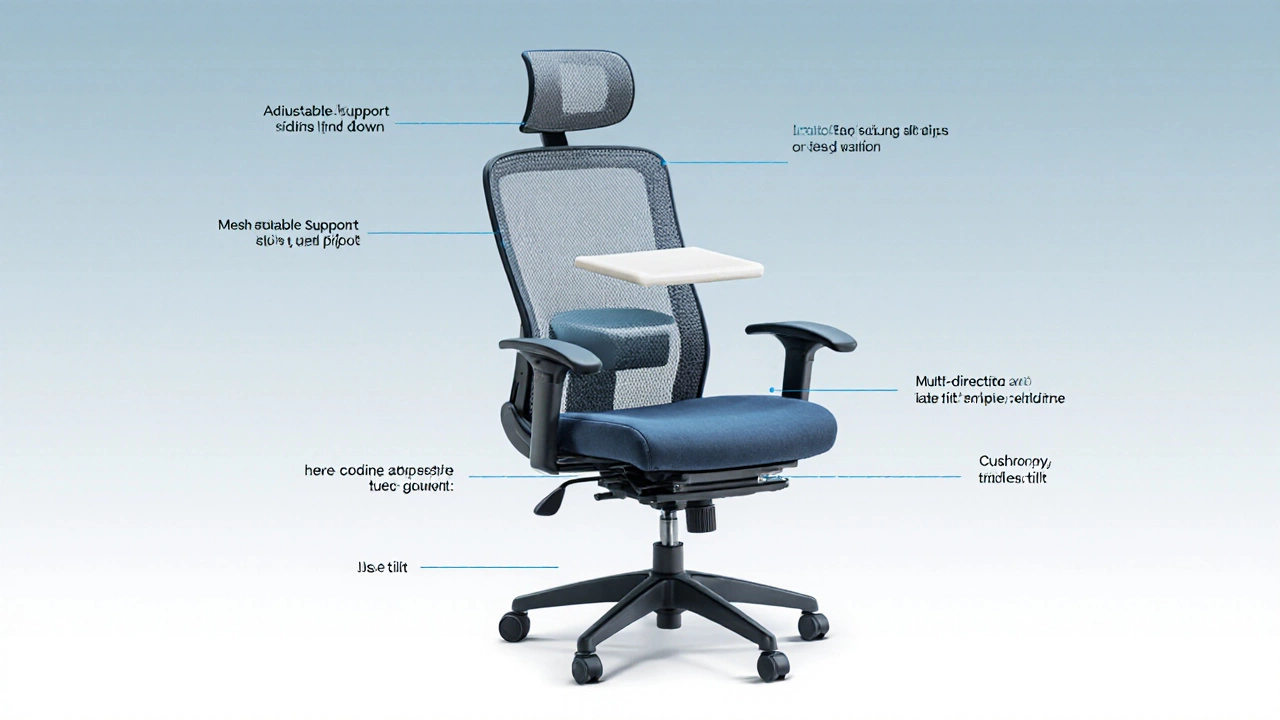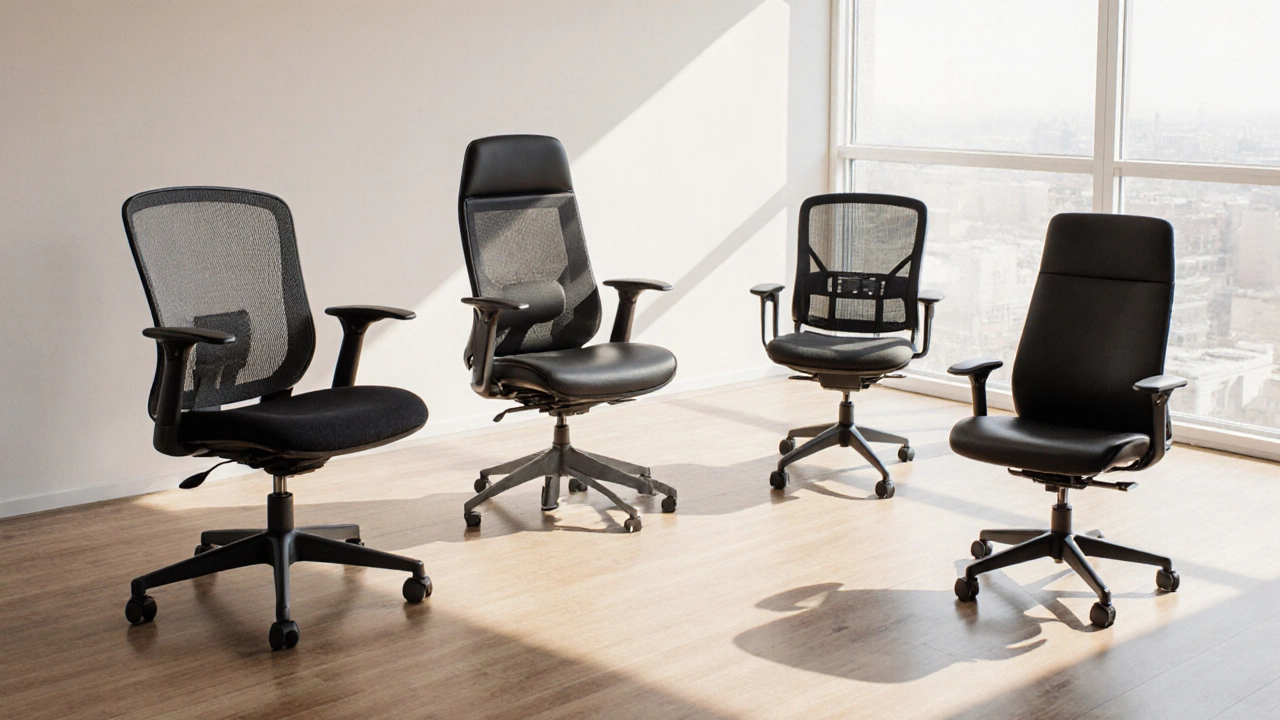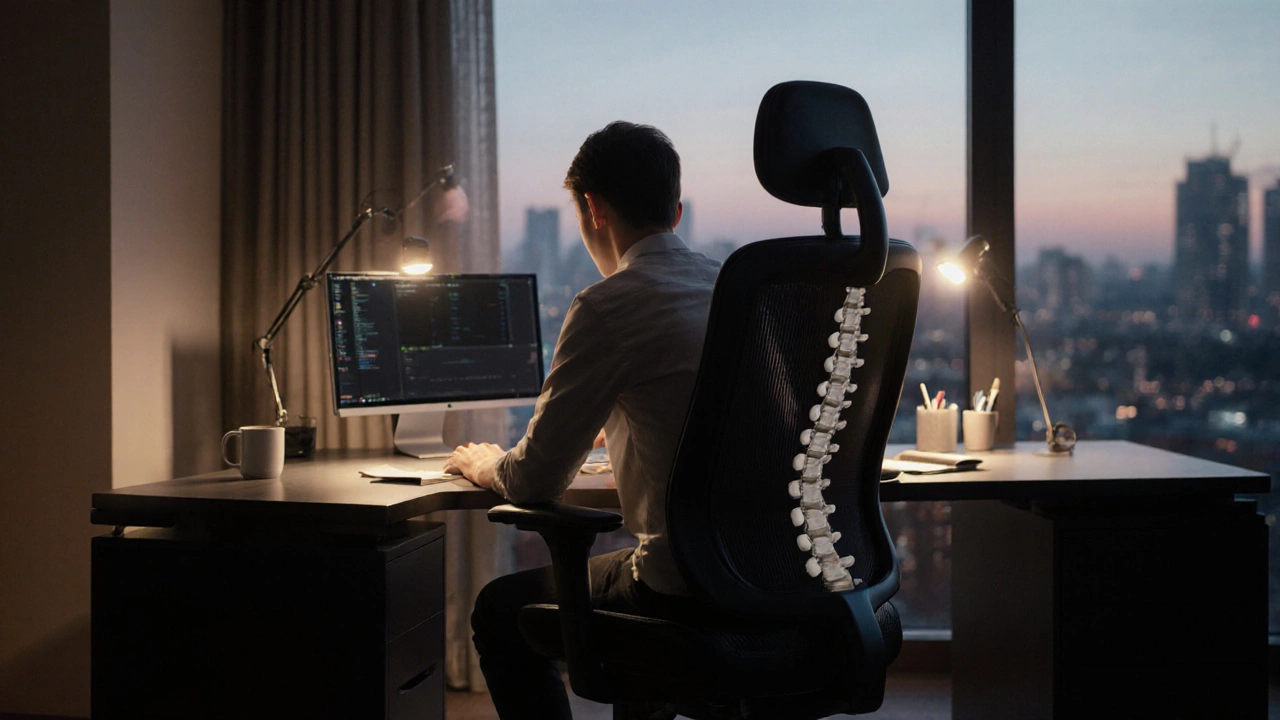Ergonomic Chair Selector
Recommended Chair:
Spending eight‑plus hours at a desk can turn a perfectly fine chair into a daily source of discomfort. The right chair does more than just sit there - it supports your spine, keeps you comfortable, and even boosts productivity. Below is a no‑fluff rundown of what to look for, the top picks for 2025, and a quick cheat‑sheet so you can make a confident decision today.
Why the Chair Matters More Than You Think
When you’re glued to a screen, your posture becomes the silent casualty. Poor lumbar support leads to chronic back pain, while an uncomfortable seat forces you to shift constantly, breaking focus. Studies from occupational health groups show that workers with proper ergonomic seating report up to 40% less fatigue and a 20% increase in task efficiency. In short, a good chair protects your health and keeps you getting things done.
Key Features to Evaluate
- Adjustable lumbar support - a built‑in or add‑on system that can be raised, lowered, or deepened to fit the natural curve of your lower back.
- Seat depth & height - the seat should let you sit with your feet flat on the floor and knees at a 90‑degree angle, while still leaving a 2‑3 inch gap between the back of your knees and the seat edge.
- Armrest flexibility - height, width, and pivot adjustments help keep shoulders relaxed.
- Back material - mesh offers breathability, whereas high‑density foam or leather provides a plush feel. Your climate and personal preference will dictate the best choice.
- Tilt and synchro‑tilt mechanisms - allow the seat and back to recline together, maintaining spinal alignment when you lean back.
- Weight capacity and base stability - a sturdy five‑point base with a strong casters system prevents wobble, even if you tend to shift around.
- Price‑to‑value ratio - the most expensive chair isn’t always the best for you. Look for features that match your budget and usage patterns.

Top Picks for 2025
Each of the chairs below hits the must‑have criteria and comes from a brand with a proven track record. The first mention of each model includes schema.org microdata so search engines can identify the core entities.
Herman Miller Aeron is a classic mesh office chair renowned for its breathability, adjustable lumbar support, and 9‑point tilt system. It supports users from 120lb to 300lb, making it a versatile choice for most professionals.
Steelcase Leap offers a flexible LiveBack technology that mimics the natural shape of your spine, plus fully adjustable armrests and seat depth. It’s praised for its durability and smooth recline.
Secretlab Titan Evo 2024 combines a high‑density cold‑cure foam cushion with a built‑in lumbar pillow, delivering a plush yet supportive ride for gamers‑turned‑remote workers.
Autonomous ErgoChair Pro+ features a breathable mesh back, 3‑D adjustable lumbar support, and a price point under $500, making it a strong budget‑friendly contender.
IKEA Markus is a widely available chair with a high‑back, built‑in lumbar curve, and a sturdy base, delivering solid comfort for under $250.
Side‑by‑Side Comparison
| Chair | Adjustable Lumbar | Mesh Back | Seat Cushion | Weight Capacity | Price (USD) |
|---|---|---|---|---|---|
| Herman Miller Aeron | Yes (3‑size options) | Yes | Pellicle® suspension | 120‑300lb | 1,495 |
| Steelcase Leap | Yes (manual knob) | No (fabric) | High‑density foam | 200‑400lb | 1,099 |
| Secretlab Titan Evo 2024 | Integrated lumbar pillow | Optional mesh | Cold‑cure foam | 175‑300lb | 499 |
| Autonomous ErgoChair Pro+ | 3‑D adjustable | Yes | Dual‑layer foam | 250lb | 449 |
| IKEA Markus | Fixed curve (no adjust) | No | Polyurethane | 242lb | 229 |

How to Choose the Right Chair for You
- Measure your body: Sit on the floor with knees bent at 90 degrees. The distance from the back of your knees to the seat edge should be about 2‑3 inches.
- Prioritize lumbar support: If you have a history of lower‑back pain, choose a chair with a fully adjustable lumbar system (Aeron, Leap, ErgoChair Pro+).
- Test the recline: A smooth tilt or synchro‑tilt lets you lean back without straining. Spend a minute in the chair’s full recline range before buying.
- Consider material climate: Mesh keeps you cool in summer; leather or high‑density foam feels warmer but may trap heat.
- Set a budget ceiling: Know the max you’re willing to spend and compare features inside that range. Often a mid‑tier chair like the Secretlab Titan Evo offers premium comfort without the $1,000 price tag.
Maintenance Tips to Extend Chair Life
- Wipe the mesh or leather weekly with a damp cloth to prevent dust buildup.
- Check casters monthly; replace worn wheels to maintain smooth movement.
- Loosen and retighten bolts every 6‑12 months - a loose bolt can cause wobble and damage the base.
- Use a chair mat if you have hard flooring; it protects both the chair’s casters and the floor.
Frequently Asked Questions
How often should I replace my ergonomic chair?
A well‑maintained chair typically lasts 7‑10 years. Replace it sooner if you notice wobble, broken mechanisms, or persistent back pain that improves with a new chair.
Is a mesh back always better than leather?
Not necessarily. Mesh excels at breathability, which helps during long sessions in warm rooms. Leather offers a premium feel and durability but can become sticky in heat. Choose based on your climate and personal comfort preference.
Can I use a gaming chair for office work?
Yes, many gaming chairs - like the Secretlab Titan Evo - include ergonomic lumbar support and high‑quality foam, making them suitable for prolonged desk work. Just ensure the chair’s adjustability meets your ergonomics checklist.
Do I need a footrest with an ergonomic chair?
If your feet cannot rest flat on the floor, a footrest helps maintain proper circulation and reduces strain on the lower back. It’s especially useful for shorter users or those using higher desks.
What warranty should I expect?
Top brands like Herman Miller and Steelcase often offer 12‑year warranties covering frames, mechanisms, and non‑wear items. Mid‑range chairs typically provide 3‑5 years. Read the warranty details before purchasing.
Choosing the best ergonomic chair for long working hours isn’t about chasing the highest price tag - it’s about matching adjustability, support, and comfort to your body. Use the checklist above, test a few models if you can, and you’ll sit pain‑free for years to come.





